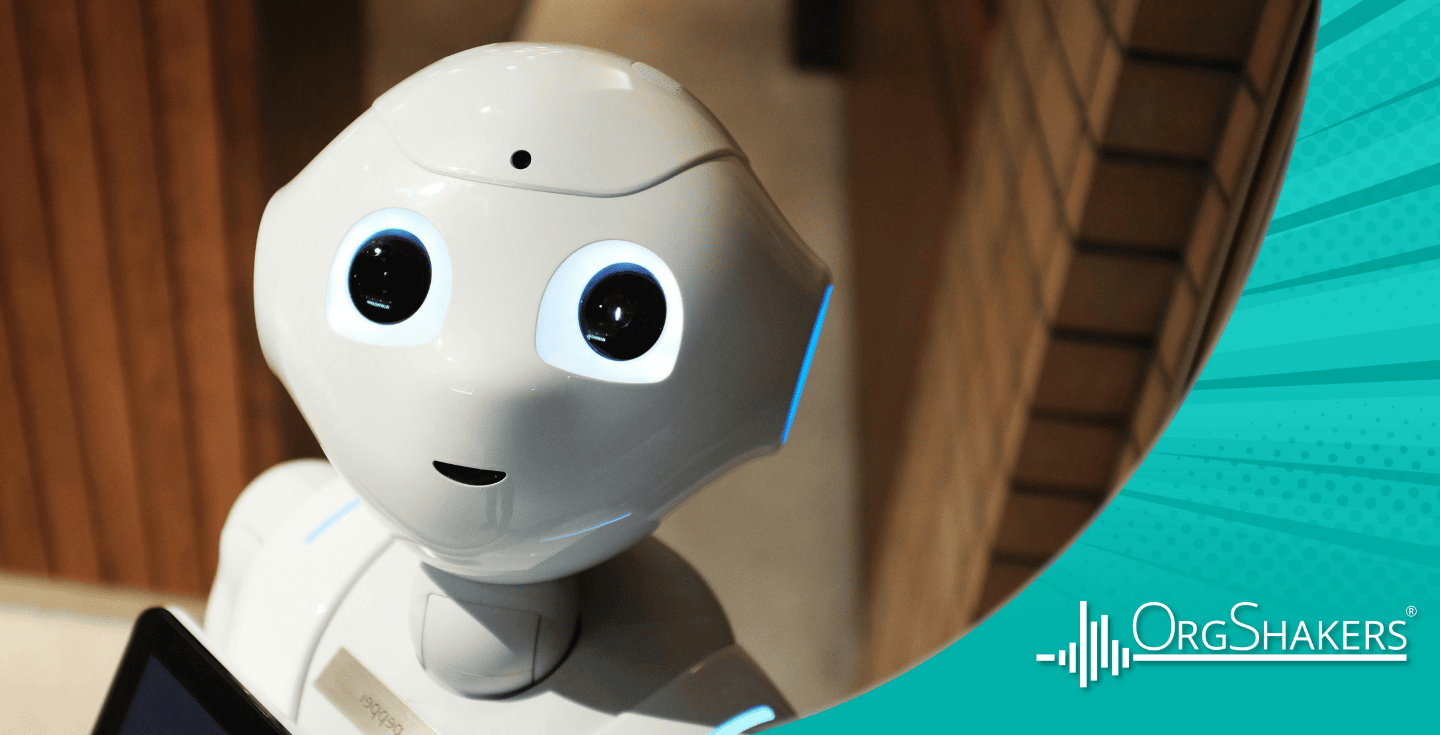Menu

AI in HR: Are HR Professionals being replaced by AI?
The business landscape is undergoing a profound transformation, driven by the accelerating pace of technological change. For human resources professionals, this new environment presents a critical mandate: moving beyond traditional skill-building to champion what’s known as “skills velocity” – the speed at which employees can acquire and adapt to new capabilities. This strategic shift is proving to be a key differentiator for top-performing companies and positions HR to lead organizations into a future defined by AI integration.
In this article, we explore the idea of “replacement” from AI, including the question of “can AI replace HR?”.
We aim to present a different argument, how AI can boost skills velocity within an organisation and how AI might change the HR landscape within a business without introducing changes to recruitment.
Boosting Skills Velocity with AI
The importance of skills velocity is underscored by the sheer speed of innovation. Recent research highlights that the half-life of professional skills has fallen dramatically, now estimated at around five years. This rapid obsolescence means that the abilities that were valuable just a few years ago may now only retain half their market value.
Forward-thinking companies, referred to as “pacesetters” recognize this reality and are actively investing in their workforce’s adaptability. These organizations are not only performing well financially, but also demonstrate stronger customer satisfaction, are recognized as leaders in innovation, and have a more resilient employer brand.
For these pacesetting companies, a successful skills strategy is built on six key components:
- AI for Growth, Not Just Efficiency: AI’s true value extends beyond cost-cutting; it’s a tool for boosting innovation and enhancing customer outcomes.
- Continuous Innovation as Standard: Skills development is no longer a one-time event, but an ongoing process that must evolve with the needs of every role.
- Work Redesign for Productivity: Modern organizations are rethinking workflows to better align with skills and capabilities, disrupting traditional hierarchies.
- Talent Density Over Quantity: These companies focus on building teams with complementary, evolving skills, creating a pipeline for employees to move into more advanced roles.
- Change Management for Agility: Pacesetters leverage skills velocity to change quickly and be more agile in the market.
- AI-Powered Systemic HR: These organizations deploy AI-enabled HR systems to bring agility to talent, skilling, and recruiting strategies.
A central theme in this skills-based revolution is the evolving relationship between humans and technology. The introduction of AI has led to concerns about job displacement, with some reports predicting significant job losses. However, a deeper look at the data reveals a more nuanced picture.
A 2024 study by SHRM found that most organizations using AI are seeing it transform jobs rather than eliminate them, and a McKinsey survey from the same year indicated that organizations that redesign workflows around AI are seeing the most positive impact.
Historically, new technologies have often acted as “co-workers” rather than replacements. The introduction of ATMs in the late 1960s, for example, did not eliminate bank tellers. Instead, it freed them from routine transactions, allowing them to focus on higher-value customer services. This historical parallel provides a powerful framework for understanding the role of AI today.
As organizations integrate AI tools, they will increasingly look to HR professionals to act as coaches, guiding employees on how to interact successfully with new technology to optimize their abilities.
This new reality requires a new approach from HR. Instead of simply managing talent, HR must become a strategic partner in managing the human-technology co-existence. A 2025 report from the World Economic Forum suggests that while some entry-level jobs are at risk of automation, AI can also democratize access to jobs by making it easier to build technical skills. This presents an opportunity for HR to harness AI as a tool for training the next generation of professionals and ensuring a robust talent pipeline.
By demonstrating how AI can help employees free up time from administrative tasks for more meaningful work, HR can not only enhance employee morale and productivity but also secure a company’s reputation as an innovator in a rapidly changing world.
So, Are HR Professionals being replaced by AI?
While AI is automating a growing number of administrative HR tasks – from resume screening and interview scheduling to answering common employee queries – it is not replacing the core function of the HR professional. Instead, it is redefining it. Research from 2025 confirms that the global impact of AI on jobs will be neutral, with new roles emerging as others are transformed.
The human skills that AI cannot replicate, such as emotional intelligence, critical thinking, strategic planning, and fostering a positive workplace culture, are becoming more important than ever. HR professionals are moving from a transactional role to a more strategic one, using AI as a tool to gain deeper insights and free up time to focus on complex people-centered challenges. The future of HR belongs to those who can master the use of AI to enhance human capabilities and drive organizational value.
How can AI be used in HR?
The applications of AI in HR are rapidly expanding across the entire lifecycle, making processes more efficient, data-driven, and personalized. In recruitment and talent acquisition, AI tools are automating resume screening, drafting job descriptions, and conducting initial interviews through chatbots, which can reduce time-to-hire by an average of 50%. This frees up recruiters to focus on building relationships with top candidates and making strategic hiring decisions.
For learning and development, AI provides personalized learning paths by analyzing an employee’s skills and performance data, then recommending specific courses to close skill gaps. In performance management, AI helps in real-time tracking of goals and provides managers with data-driven insights to offer more timely and objective feedback.
Employee engagement and retention are also being transformed, with AI analyzing feedback and sentiment from surveys to predict turnover risks and recommend proactive interventions.
Finally, in HR administration and compliance, AI systems handle repetitive tasks like payroll processing, benefits administration, and policy compliance monitoring, reducing errors and ensuring the organization stays current with evolving regulations.
Conclusion
The age of AI is not a threat to be feared, but a seismic shift to be embraced. The success of today’s leading organizations is intrinsically linked to their ability to foster a culture of skills velocity, one where employees and the organization as a whole can rapidly adapt to new technologies and market demands. There is a chance in the HR world for HR and AI to go hand-in-hand and boost productivity.
For HR professionals, this means stepping into a new, more strategic leadership role. By acting as a guide and a partner, HR can help the workforce navigate the integration of AI, ensuring that technology serves to augment human potential rather than diminish it. This proactive approach will not only drive business success but also ensure that organizations remain agile, innovative, and deeply human in an increasingly automated world.
Want to discuss how best to utilise AI in your organisation from a HR standpoint? Get in contact with OrgShakers today.



